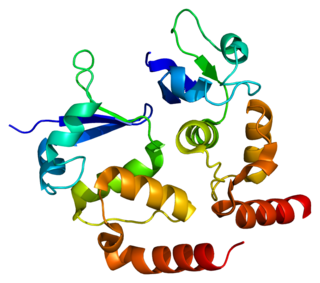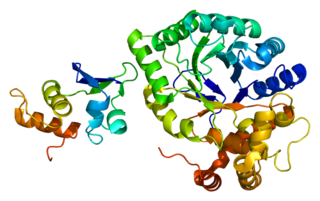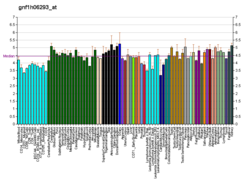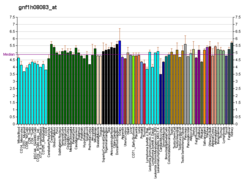
Potassium voltage-gated channel, shaker-related subfamily, member 5, also known as KCNA5 or Kv1.5, is a protein that in humans is encoded by the KCNA5 gene.

Potassium voltage-gated channel subfamily D member 2 is a protein that in humans is encoded by the KCND2 gene. It contributes to the cardiac transient outward potassium current (Ito1), the main contributing current to the repolarizing phase 1 of the cardiac action potential.

Potassium voltage-gated channel subfamily A member 4 also known as Kv1.4 is a protein that in humans is encoded by the KCNA4 gene. It contributes to the cardiac transient outward potassium current (Ito1), the main contributing current to the repolarizing phase 1 of the cardiac action potential.

Potassium voltage-gated channel subfamily D member 3 also known as Kv4.3 is a protein that in humans is encoded by the KCND3 gene. It contributes to the cardiac transient outward potassium current (Ito1), the main contributing current to the repolarizing phase 1 of the cardiac action potential.

Potassium voltage-gated channel subfamily H member 1 is a protein that in humans is encoded by the KCNH1 gene.

Voltage-gated potassium channel subunit beta-1 is a protein that in humans is encoded by the KCNAB1 gene.

Voltage-gated potassium channel subunit beta-2 is a protein that in humans is encoded by the KCNAB2 gene.

Kv channel-interacting protein 1 also known as KChIP1 is a protein that in humans is encoded by the KCNIP1 gene.

Potassium voltage-gated channel, Shaw-related subfamily, member 4 (KCNC4), also known as Kv3.4, is a human gene.

Potassium voltage-gated channel, Shal-related subfamily, member 1 (KCND1), also known as Kv4.1, is a human gene.

Potassium channel regulator, also known as KCNRG, is a protein which in humans is encoded by theKCNRG gene.

Potassium voltage-gated channel subfamily G member 1 is a protein that in humans is encoded by the KCNG1 gene.

Potassium channel subfamily K member 17 is a protein that in humans is encoded by the KCNK17 gene.

Potassium voltage-gated channel subfamily G member 3 is a protein that in humans is encoded by the KCNG3 gene. The protein encoded by this gene is a voltage-gated potassium channel subunit.

Potassium voltage-gated channel subfamily S member 2 is a protein that in humans is encoded by the KCNS2 gene. The protein encoded by this gene is a voltage-gated potassium channel subunit.

Potassium voltage-gated channel subfamily H member 6 is a protein that in humans is encoded by the KCNH6 gene. The protein encoded by this gene is a voltage-gated potassium channel subunit.

Potassium voltage-gated channel subfamily H member 7 is a protein that in humans is encoded by the KCNH7 gene. The protein encoded by this gene is a voltage-gated potassium channel subunit.

Potassium voltage-gated channel subfamily H member 8 is a protein that in humans is encoded by the KCNH8 gene. The protein encoded by this gene is a voltage-gated potassium channel subunit.

Potassium voltage-gated channel subfamily H member 3 is a protein that in humans is encoded by the KCNH3 gene. The protein encoded by this gene is a voltage-gated potassium channel subunit.

Voltage-gated potassium channel subunit beta-3 is a protein that in humans is encoded by the KCNAB3 gene. The protein encoded by this gene is a voltage-gated potassium channel beta subunit.




















